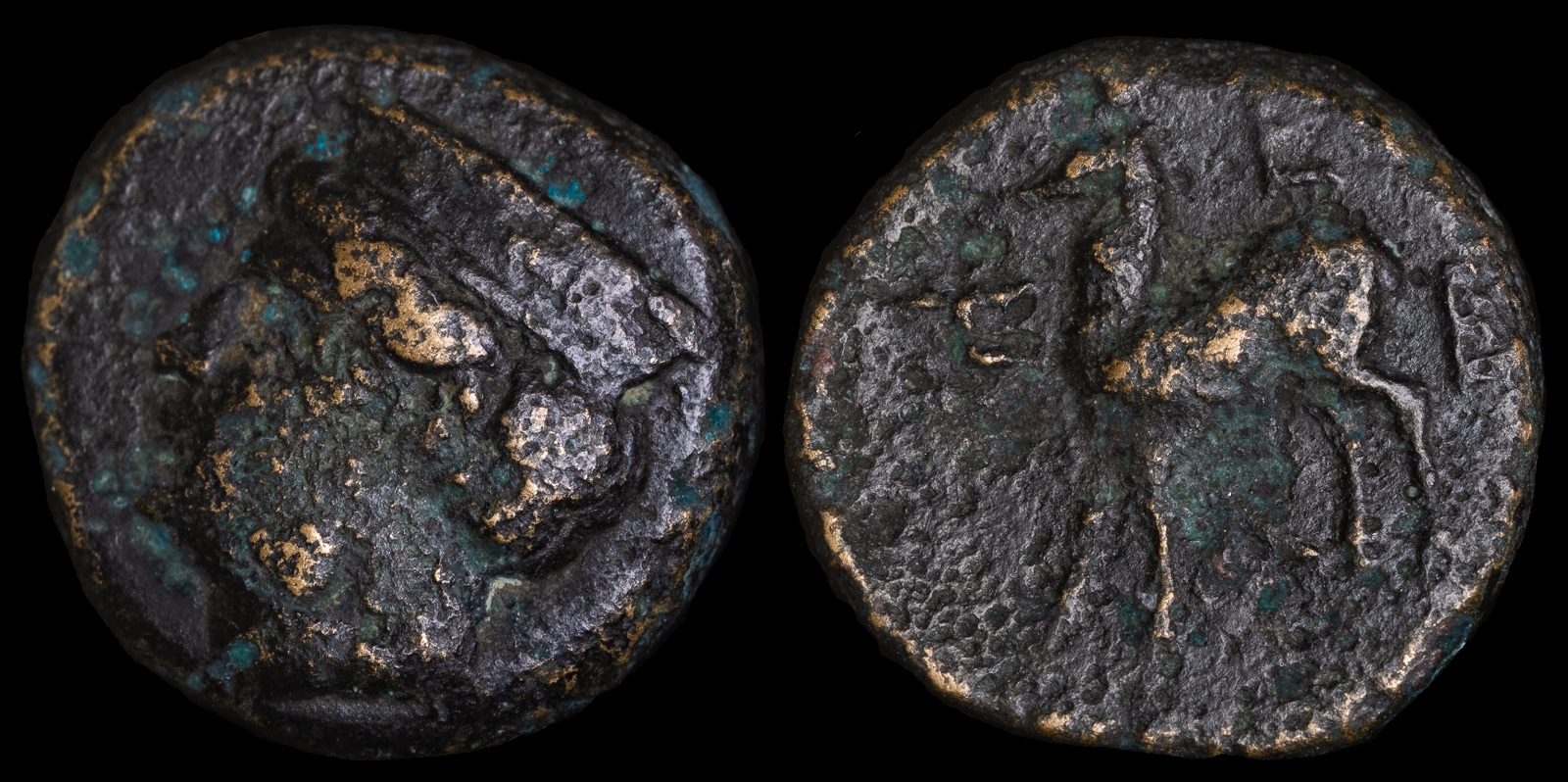
Nikagoras of Zeleia(?)
4th century BCE
Æ 12mm, 1.65 gm, 5h
Obv: Head of Artemis (Hermes?) left, wearing stephane decorated with pellets.
Rev: Z-Ε/Λ-Ε, stag standing left.
BMC__; SNG Copenhagen__;SNG France__; SNG Ashmolean__
Unrecorded in the major references with bust and stag left
Recently, I acquired a coin of Zeleia that I think may be attributable to the tyrant Nikagoras of Zeleia. It’s very possible that I’m the only person who thinks this, but below I’ll present my argument.
First of all, this is another coin I have from Zeleia. It’s more typical of 4th century Zeleia issues.
Why do I think this was minted from the tyrant Nikagoras? Primarily because I believe the obverse is not Artemis, but Hermes.
Nikagoras was a very interesting fellow, about whom we know practically nothing – save for one crazy behavior.
And why mention Nicagoras, a man of Zeleia by race, living in the time of Alexander, who was addressed as Hermes and wore the garb of Hermes, according to his own evidence? For indeed whole nations and cities with all their inhabitants, putting on the mask of flattery, belittle the legends about the gods, mere men, puffed up with vain-glory, transforming men like themselves into the equals of the gods and voting them extravagant honours.
– Clement of Alexandria, Exhortations
Athenaios also mentioned him.
Another attendant, with the riding-cloak and herald’s staff, “and wings besides,” was called Hermes, like Nicagoras of Zeleia, who became tyrant of his native city, according to the account given by Baton in his “History of the Tyrants in Ephesus “.
So, Nikagoras lived around the time of Alexander the Great and insisted on dressing like and being called, Hermes. Therefore, a rare issue from 4th century Zeleia with an image of Hermes instead of Artemis would be very suspicious of his reign. Unfortunately, we don’t know how long he ruled before Alexander arrived, nor do we know if Alexander deposed him, so we can’t provide any specific date range other than “around 334 BCE”.
Therefore, my entire argument lies on whether the obverse is Artemis or Hermes. I therefore went through other coins I have with Artemis and Hermes and noticed something interesting.
The thing that struck me is that, other than my Pheneos coin, everyone seems to have followed this system.
Artemis faces right
Hermes faces left
I’m not sure what to make of this. A check on ACSearch shows a number of coins that don’t follow this, but keep in mind that I’m narrowing on 4th century bronze coinage. Two possibilities to explain the right facing Pheneos.
Pheneos was in the Peloponnese, while Phokaia, Eresos, Ainos, and Zeleia are in Asia Minor
Pheneos may depict Artemis instead of Hermes. The attribution to Hermes is likely due to the slightly more masculine face and the fact that Pausanias said that they worshipped “Hermes more than any other” but the same other also mentioned that they regularly prayed to Artemis too.
What I believe a more likely reason is that, during this time, Artemis tended to face right and Hermes tended to face left, mainly to avoid confusion. Likely in places where there would be no confusion (such as a temple to either), I doubt this was followed. However, when faced with a prior coinage depicting Artemis, in order to clearly make sure everyone knew that his coins had Hermes (aka Nikagoras) and not Artemis, the simplest thing to do on a small bronze coin was to make the portrait face the other way.